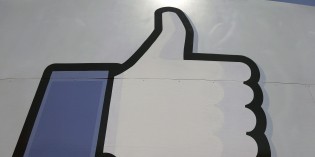New benchmarking data released by native ad technology firm Polar suggest that consumers are more likely to engage with mobile native ads if they’re distinct enough for consumers to identify them as sponsored content.
Publishers that adhere to being transparent do better
Mark Cluett, Polar
For example, Polar found that mobile native ads identified with a non-standard label or badge are twice as likely to be clicked than native ads that use the same label format as editorial categories on the site. Native ads that used a company logo were 52% more likely to get clicks than those that didn’t, and native thumbnails that were “lightly shaded” to set them apart from editorial thumbnails were 12% more likely to get clicks than those that weren’t.
“We’ve found in both our earlier desktop benchmarks and in mobile that those publishers that adhere to being transparent do better,” said Mark Cluett, marketing manager at Polar (formerly Polar Mobile).
He said that even though it seems counterintuitive (given that native ads are meant to mimic editorial content), the data showed a preference for sponsored ads that were clearly marked. However, there were some indications that despite this preference, sponsored ads should still blend with the rest of the site – sponsored ads that used the same or similar font as surrounding content performed 49% better than those that didn’t.
The data was collected from 1 billion mobile app and mobile web native ads served by Polar’s publisher clients, which include The Washington Post, Conde Nast and The Globe and Mail. Polar provides a solution that helps publishers manage, publish and analyze native ad content.
The new benchmarks for mobile add to Polar’s existing benchmarks for desktop native. Cluett said that Polar has seen interest in mobile-specific native ramping up, and for good reason – the benchmarks show native ads exposed on a smartphone have an 80% higher CTR rate than desktop native (0.27% CTR on smartphone vs. 0.15% CTR on desktop), and the average user views native content for 1.5 times longer on mobile than on desktop (3:37 on smartphone versus 2:02 on desktop).
Native mobile ads significantly outperform mobile banners. According to the most recent benchmarks from global ad server Sizmek, standard mobile banners typically have a CTR of 0.09%.
Of course those numbers are just for smartphones. Tablets, somewhat surprisingly, have a similar CTR to smartphones (0.24%) but the lowest average time spent of any device (1:53). Cluett speculates that has to do with easier navigation on the tablet, giving consumers more distractions and opportunities to navigate away.
He said it’s also possible that the difference has to do with mobile sites that are optimized for smartphone but not for tablet, since the study looked at both optimized and non-optimized mobile sites.
In previous benchmarking studies, Polar found that Canadians were slightly more likely to click on desktop native ads than Americans or Brits. On desktop, Canadians click through native ads 0.16% of the time versus 0.14% in the U.S. and 0.09% in the U.K.










